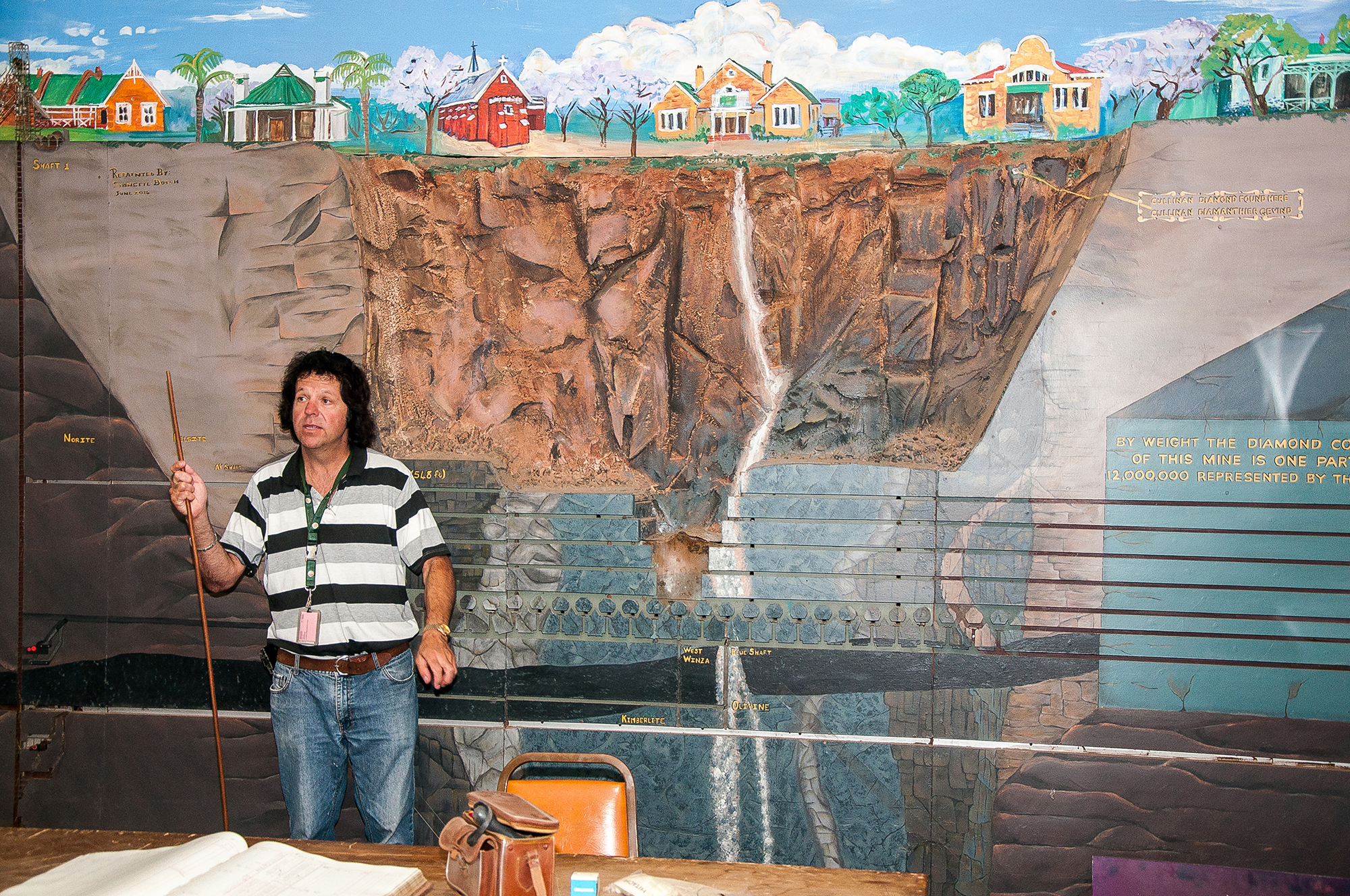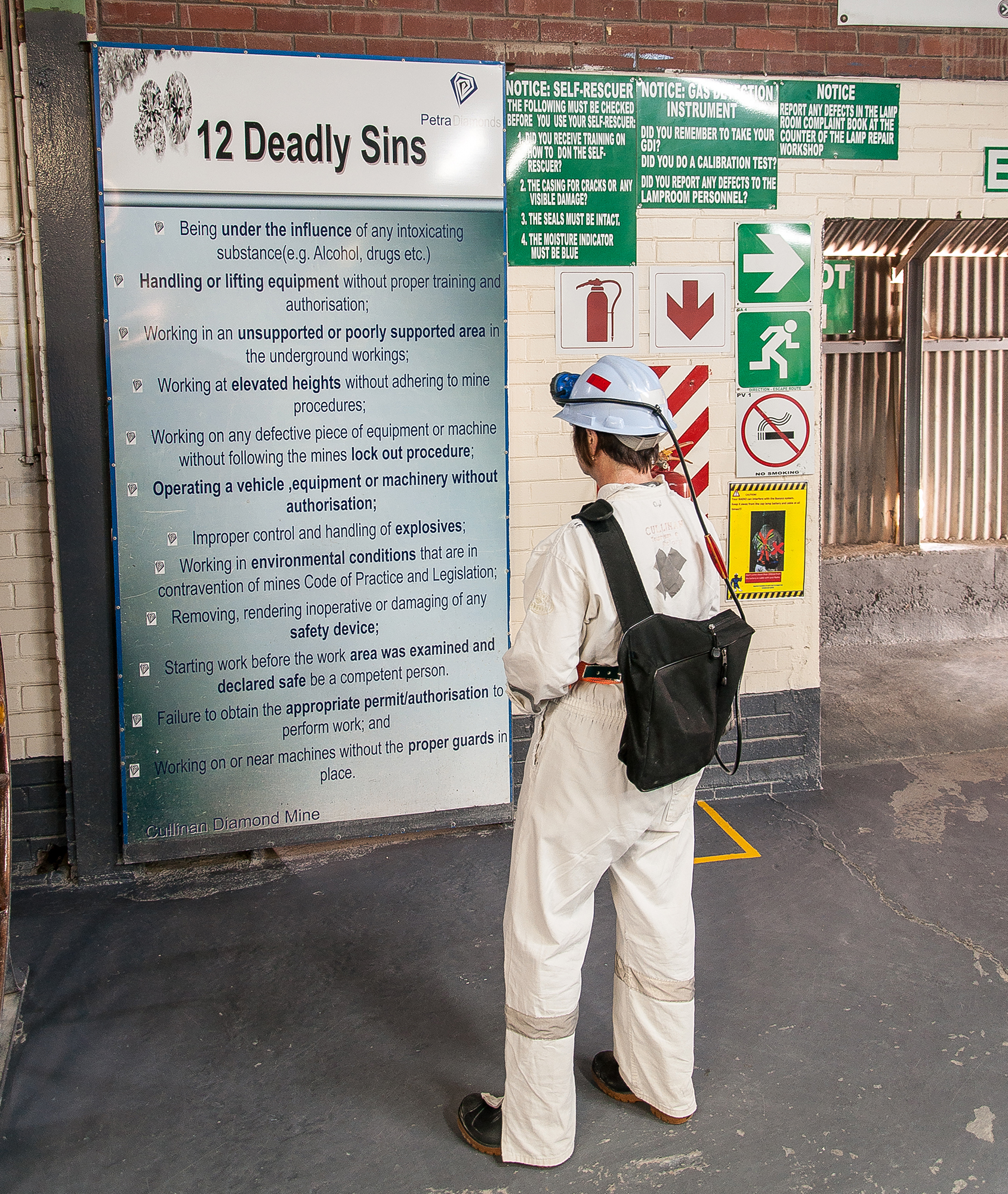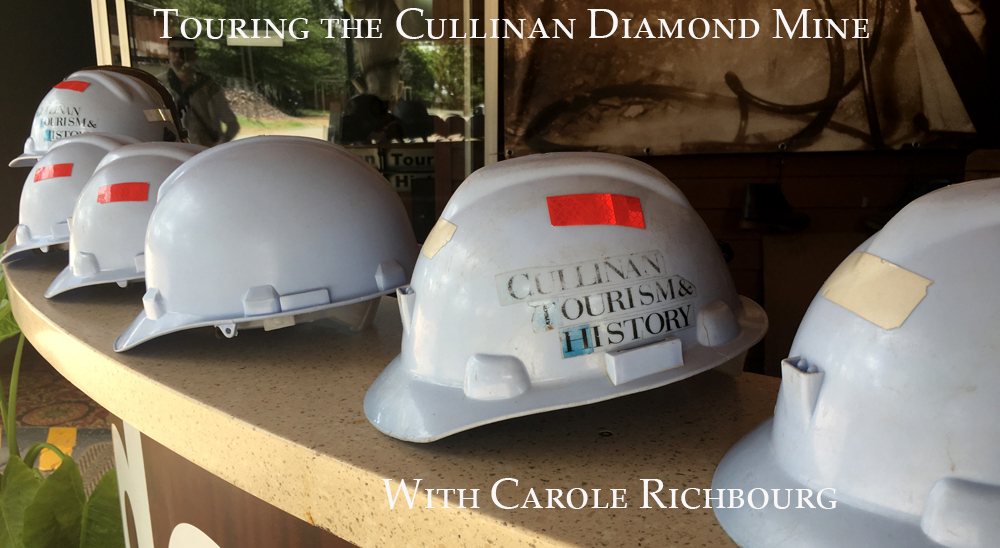Carole Richbourg, GG, FGA, ASA, Master Gemologist Appraiser® is an independent jewelry appraiser serving the Silicon Valley. A full-time appraiser since 1989, she has over forty years of broad experience in the jewelry industry.
[Article adapted for Kerns’ Blog from Jewelry Business Journal 2017)
[Article adapted for Kerns’ Blog from Jewelry Business Journal 2017)
My husband and I are in the middle of nowhere in Namibia. There’s no air conditioning in our room and its hot outside, but the structures are built with climate in mind: thick adobe walls, fans circulating overhead, and a deep overhang on the large picture window. The window! It looks like a giant flat-screen TV with its camera set on the Namibian plains. Out in the distance are acacia trees, warthogs grazing, the occasional springbok and loads of native birds.
The foremost reason for our African sojourn was to experience what I’ve only read about, walking through a working diamond mine. That my cameraman (aka husband) and I were also able to go on a photo safari in Namibia before continuing to Johannesburg was certainly a bonus. In addition to the mine tour, we were able to tour the trading offices and the diamond cutting factory of a renowned Johannesburg diamond cutter the next day.
The Cullinan diamond mine, historically known as the Premier, is situated nearly 40-km east of Pretoria in the small town of Cullinan. Established in 1902, the mine made its mark in history when, on January 25, 1905, the Cullinan diamond was found by Frederick Wells, surface manager of the Premier Diamond Mining Company. Weighing in at 3,106 carats, it still retains the record of being the largest rough diamond of gem quality ever found. The Cullinan diamond was cut to form the two most important diamonds in the British Crown Jewels – the 530 carat Great Star of Africa and the 317 carat Lesser Star of Africa. The mine was christened the Cullinan for its Centenary in 2003, after the first chairman of the mining company; Sir Thomas Cullinan and was acquired by Petra Diamonds in 2008 for 1 billion South African Rand (ZAR) (125 million US dollars).
We arrived just in time to jump into coveralls, socks, rubber waders, helmet, and back-pack and catch the tour. Slinging the backpack over my shoulder, we joined the group viewing a short film about the history of the mine. Our small group was international: a couple each from Israel, France, and England. Next, we proceeded to a large room containing loads of interesting historical memorabilia, including photographs and information of famous diamonds found in the mine over the years, antique mining tools, and a large topical map of the mine itself that took up an entire wall.
The foremost reason for our African sojourn was to experience what I’ve only read about, walking through a working diamond mine. That my cameraman (aka husband) and I were also able to go on a photo safari in Namibia before continuing to Johannesburg was certainly a bonus. In addition to the mine tour, we were able to tour the trading offices and the diamond cutting factory of a renowned Johannesburg diamond cutter the next day.
The Cullinan diamond mine, historically known as the Premier, is situated nearly 40-km east of Pretoria in the small town of Cullinan. Established in 1902, the mine made its mark in history when, on January 25, 1905, the Cullinan diamond was found by Frederick Wells, surface manager of the Premier Diamond Mining Company. Weighing in at 3,106 carats, it still retains the record of being the largest rough diamond of gem quality ever found. The Cullinan diamond was cut to form the two most important diamonds in the British Crown Jewels – the 530 carat Great Star of Africa and the 317 carat Lesser Star of Africa. The mine was christened the Cullinan for its Centenary in 2003, after the first chairman of the mining company; Sir Thomas Cullinan and was acquired by Petra Diamonds in 2008 for 1 billion South African Rand (ZAR) (125 million US dollars).
We arrived just in time to jump into coveralls, socks, rubber waders, helmet, and back-pack and catch the tour. Slinging the backpack over my shoulder, we joined the group viewing a short film about the history of the mine. Our small group was international: a couple each from Israel, France, and England. Next, we proceeded to a large room containing loads of interesting historical memorabilia, including photographs and information of famous diamonds found in the mine over the years, antique mining tools, and a large topical map of the mine itself that took up an entire wall.

The history room
After an overview of the mine’s history, we followed our underground guide – a stoic and very competent gentleman named Henne – into a small room equipped with a large monitor. Here we viewed the safety video. Unlike the safety demonstrations on airplanes – you know the ones we have seen a hundred times and mostly ignore – this 7-step instructional video, memorized by yours truly, detailed how to use the breathing apparatus that would save our lives in case of an explosion, accident or accumulation of poison gas. We were relieved to learn that the gases in coal mines or gold mines are much worse than anything you might encounter in a diamond mine. Henne also informed us that he has never had to activate his kit, and he started working in the mine, then under DeBeers ownership, in 1958. Next, we ventured onto the equipment room where Henne finished our ensemble with a breathing pack, headlamp and proximity beacon.
All suited up, we were ready to take the trek to the elevator cage that would take us 783 meters (2568 feet) to the bottom of the Cullinan Diamond Mine.
All suited up, we were ready to take the trek to the elevator cage that would take us 783 meters (2568 feet) to the bottom of the Cullinan Diamond Mine.

All suited up
Sidebar:
Other notable diamonds from the Cullinan Mine


